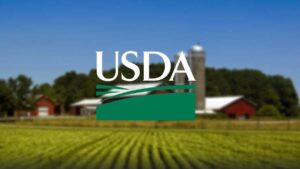As efforts ramp up to reduce greenhouse gas emissions, companies turn to the carbon market to help them achieve net-zero emissions. A recent report from the USDA looks into barriers for farmers trying to participate in carbon markets. The report points to limited return on investment, costs for quantification and verification, and record-keeping as barriers farmers face when entering carbon markets.
As companies and farmers try to navigate this growing market, many have described it as the “wild west”. However, Growmark’s Lance Ruppert said while it still is a little “wild west” there has been some recent development and regulations.
“California signed a new bill requiring companies that do business over a certain threshold dollar-wise to disclose their carbon footprint and quantify it,” said Ruppert. “So that drives activity at the corporate level. The Inflation Reduction Act potentially giving tax incentives to refineries to lower their carbon footprint through renewable fuels ethanol, renewable diesel, [sustainable aviation fuel].”
Farmers are not just limited to carbon when it comes to environmental credit markets. Other credit programs include mitigation and conservation banks, habitat exchanges, and water quality trading.
Listen to the full interview with Lance Ruppert here.













